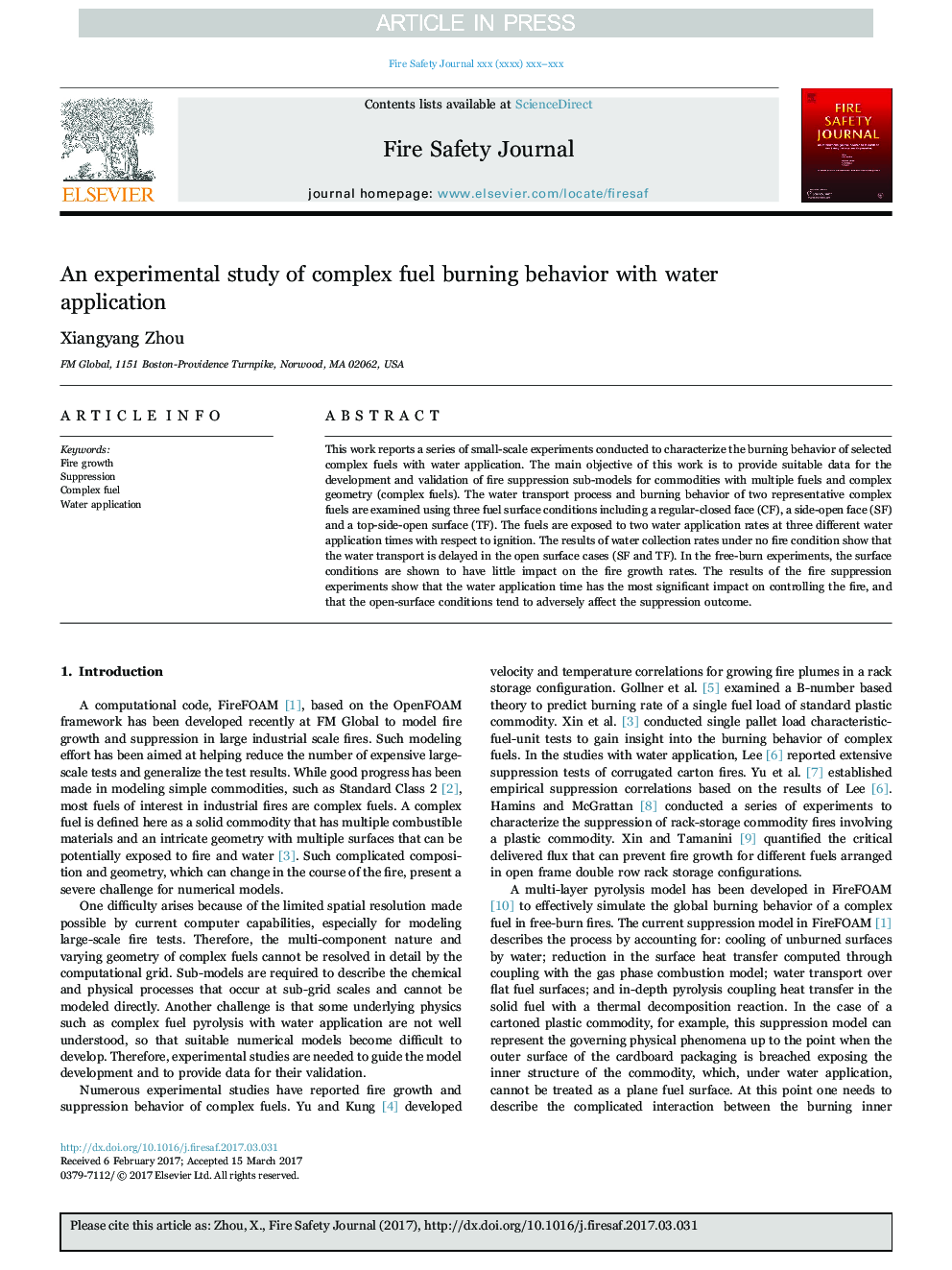| Article ID | Journal | Published Year | Pages | File Type |
|---|---|---|---|---|
| 4920944 | Fire Safety Journal | 2017 | 8 Pages |
Abstract
This work reports a series of small-scale experiments conducted to characterize the burning behavior of selected complex fuels with water application. The main objective of this work is to provide suitable data for the development and validation of fire suppression sub-models for commodities with multiple fuels and complex geometry (complex fuels). The water transport process and burning behavior of two representative complex fuels are examined using three fuel surface conditions including a regular-closed face (CF), a side-open face (SF) and a top-side-open surface (TF). The fuels are exposed to two water application rates at three different water application times with respect to ignition. The results of water collection rates under no fire condition show that the water transport is delayed in the open surface cases (SF and TF). In the free-burn experiments, the surface conditions are shown to have little impact on the fire growth rates. The results of the fire suppression experiments show that the water application time has the most significant impact on controlling the fire, and that the open-surface conditions tend to adversely affect the suppression outcome.
Keywords
Related Topics
Physical Sciences and Engineering
Engineering
Civil and Structural Engineering
Authors
Xiangyang Zhou,
